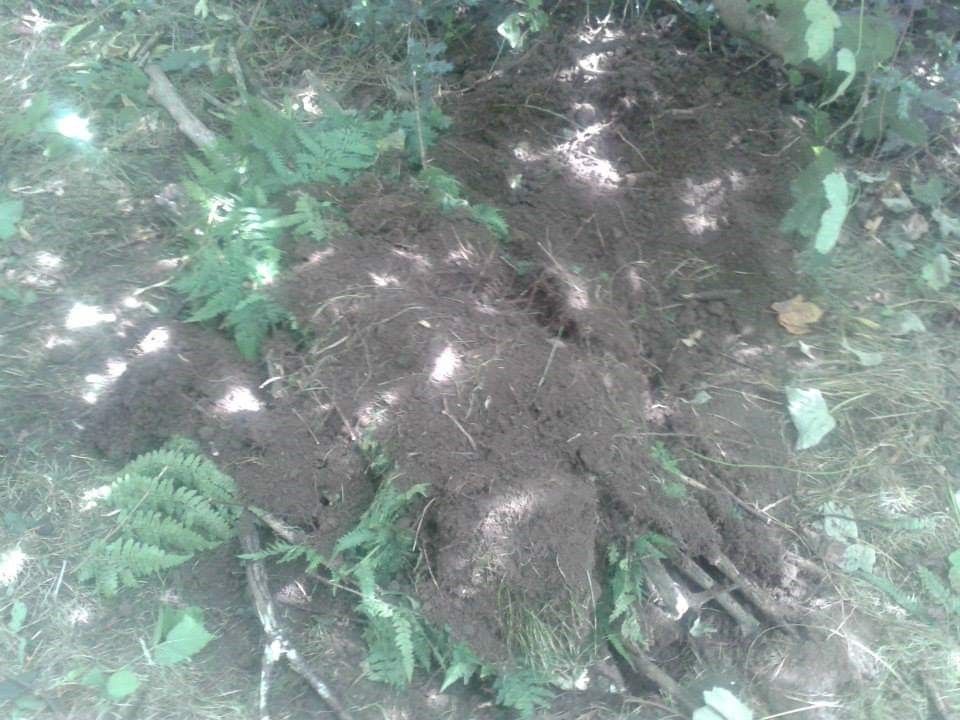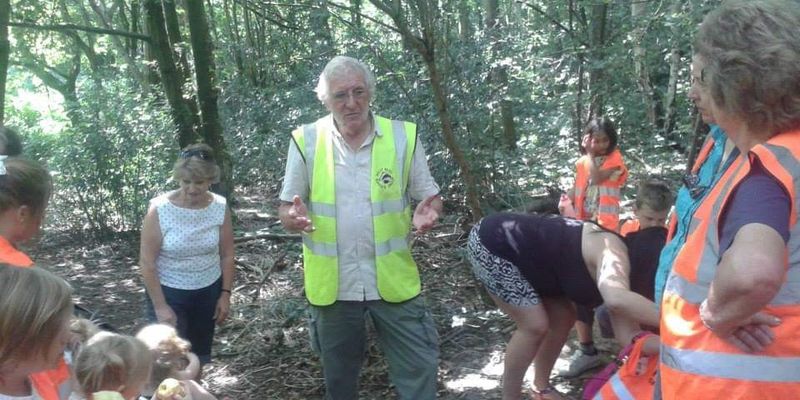Friends of Hoblingwell was established around late 2009 after a public consultation on park improvements.
Here, Darren Russell, park ranger and founder of their youth group, shares his experiences:
"It wasn’t until March 2010 that we became active with the community when we held our first Easter Egg Hunt which attracted about 20 kids and their parents.
By the time of our fourth Easter Event in 2014 we had 130 kids attending so we asked some parents if they would be interested in some wildlife sessions and a few agreed. A few months later we held our first Little Friends of Hoblingwell Event. This was run by our Community Manager, Caroll Long, and me. We put out an invite and around 12 families attended. It was set-up for two hours and we provided drinks and fruit as well as small hi-visibility vests, gardening gloves and small tools. Caroll got the Little Friends to build some small reptile and amphibian houses, hibernacula’s, by digging 30cm (12 inch) deep holes, covering them with sticks and putting the excavated mud back on top.

I arranged for our Local badger expert from West Kent Badger Group, Dave Witherspoon, to come along with some of his stuffed Badger friends, which the kids loved, and he gave a brilliant talk. We had a small lunch and the little friends then enjoyed the playground.
We were hoping to make this a regular event, but things changed that meant we couldn’t. I was accepted onto a fulltime Environmental Conservation diploma course with the London Wildlife Trust and the Council were making staff cuts and were in the process of handing the greenspaces management over to parks contractors.
In August I had a break and the local community centre asked if I could do a Little Friends of Hoblingwell session for some of their families as part of a new project they’d secured funding for. The families had to make their own packed lunches from ingredients provided by one of our local stores and we would provide the activity before their picnic. This time we surveyed butterflies and the different plants in our meadow. Dave our badger guy was again in attendance and we had a nice lunch.
After that session, the Little Friends kind of went into hibernation for about five years. I joined the parks contractors and was looking after other parks and friends groups.
Then in September last year I lost my partner due to a short illness and needed something to keep me occupied during the weekends. I approached a friend who is a bird enthusiast to see if he would be interested in starting a young group. We wanted to call it the Hoblingwell Rangers and to run it free for the local community, but this name was already being used by my employers for a kids group they ran where families paid a fee to attend. We decided to do some pilot sessions using our own children, nephews and children of friends using our old Little Friends of Hoblingwell name and delivering some structured sessions.
We held our first one in October 2019 and got them to map four different areas: the grass meadow, reptile area, badger setts and the pond. It was a good exercise. The kids loved learning about the different habitats and drawing them on a blank map. Afterwards the local Rugby club invited them back for hot chocolate.
Unfortunately, but as we expected, the weather turned cold and we agreed to start up again in March 2020 and looked into their next session which would have been listing the different species you find in each habitats.

Then COVID-19 shut everything down, putting a halt to everything. We had planned to have our Little Friends put on a display of what they have done to show at our 10th Easter Egg Hunt, but the event had to be cancelled. We’d bought more than 300 Easter Eggs for the event and didn’t want our little Friends to eat them all, so we donated some to our local hospital kids ward and a local Hospice.
During the lockdown we’ve reorganized what we can do and have kept in contact with the parents about organizing some home studies. We’ll base this around what we’ve delivered so far, such as mapping the habitats. The mapping system we use is Google’s My Maps, GPS system. Combining this with search tools and websites, the kids can identify species, learn about different habitats, and continue to make nature connections so they’ll be raring to go when we’re all allowed back outside together again."



